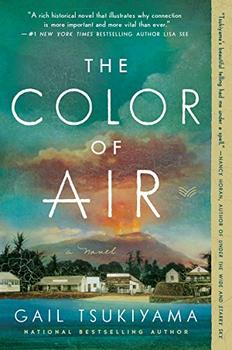Summary | Excerpt | Reading Guide | Reviews | Beyond the book | Read-Alikes | Genres & Themes | Author Bio

A well-written historical novel can so mesmerize readers that they come to feel they understand what it was like to live in a past era, as if they have truly experienced the sights, smells and cultures of a time and place beyond their personal knowledge. In Honolulu, author Alan Brennert succeeds brilliantly in this goal.
At first, the plot of Honolulu may seem overly familiar. Readers have encountered protagonists in similar circumstances on the pages of many recent bestselling novels (Snow Flower and the Secret Fan, Memoirs of a Geisha, the works of Amy Tan). Even after the main character reaches Hawaii, much of the plot is predictable. Brennert's writing, however, is so compelling that readers soon find they are unable to put the book down. Fortunately, its story departs from the expected after the first five chapters or so, after which it becomes an absorbing study of Asian culture in Hawaii as seen through the eyes of a Korean woman.
The protagonist of the novel is, in many ways, very ordinary. Jin Choi is neither beautiful nor plain. Although she does experience poverty, for the most part her fortunes are relatively middle-class. She has her biases, performs both good and questionable deeds, and experiences both joy and sorrow. Brennert's rich and multifaceted characterization establishes Jin as more than just a character in a book; she becomes someone the reader knows and cares about. She is so practical and adaptable that the reader can't help but root for her success. Brennert realistically depicts the gradual cultural shift Jin undergoes as she becomes more Americanized over the decades, creating a three-dimensional character that grows and matures over the course of the novel.
Brennert has his heroine interact with several newsworthy people who actually lived in Honolulu in the 1920's and 30's. She is, for example, close friends with the prostitute who inspired Somerset Maugham's character Sadie Thompson, and with Chang Apana, the Honolulu police officer on whom the character of the fictional detective Charlie Chan is based. Given the fascinating life the author creates for this "common" woman, this literary affectation seems unnecessary and feels contrived and distracting. The line between fiction and non-fiction should be seamless in this genre; here, it's overt. In this reviewer's opinion, the book would have been stronger without the protagonist's fictional friendships with real-life individuals.
That minor criticism aside, Brennert superbly conveys the historic events and the atmosphere of Honolulu in the 1920's and 1930's. Jin becomes the reader's witness to race riots, the effect of the Great Depression, and other major and minor happenings during the early decades of the 20th century. Brennert describes the scenes and emotions vividly, putting the reader in the midst of these events. The reader is left with the feeling that he or she actually experienced the incidents the author relates, as well as with a new understanding of this turbulent period of American history.
Honolulu is everything good historical fiction should be. It entertains and educates, while immersing the reader in the time and place conveyed, and it's sure to find its way into many readers' hearts.
Back-Story
Honolulu grew out of Alan Brennert's research for his previous novel,
Moloka'i.
"One of the most colorful periods of modern Hawaiian history
was the so-called 'glamour days' of the 1920s and 1930s," Alan explains. "This
was a time period I couldn't really explore in depth in Moloka'i, since my main
characters were in isolation at Kalaupapa. Where Moloka'i was
principally about Native Hawaiians, Honolulu is more about the immigrant experience
in Hawai'i, and the origins of its unique multicultural society."
![]() This review was originally published in The BookBrowse Review in March 2009, and has been updated for the
February 2010 edition.
Click here to go to this issue.
This review was originally published in The BookBrowse Review in March 2009, and has been updated for the
February 2010 edition.
Click here to go to this issue.

If you liked Honolulu, try these:

by Gail Tsukiyama
Published 2021
From the New York Times bestselling author of Women of the Silk and The Samurai's Garden comes a gorgeous and evocative historical novel about a Japanese-American family set against the backdrop of Hawai'i's sugar plantations.

by Mary Beth Keane
Published 2014
A bold, mesmerizing novel about the woman known as "Typhoid Mary," the first known healthy carrier of typhoid fever in the burgeoning metropolis of early twentieth century New York.
Your guide toexceptional books
BookBrowse seeks out and recommends the best in contemporary fiction and nonfiction—books that not only engage and entertain but also deepen our understanding of ourselves and the world around us.